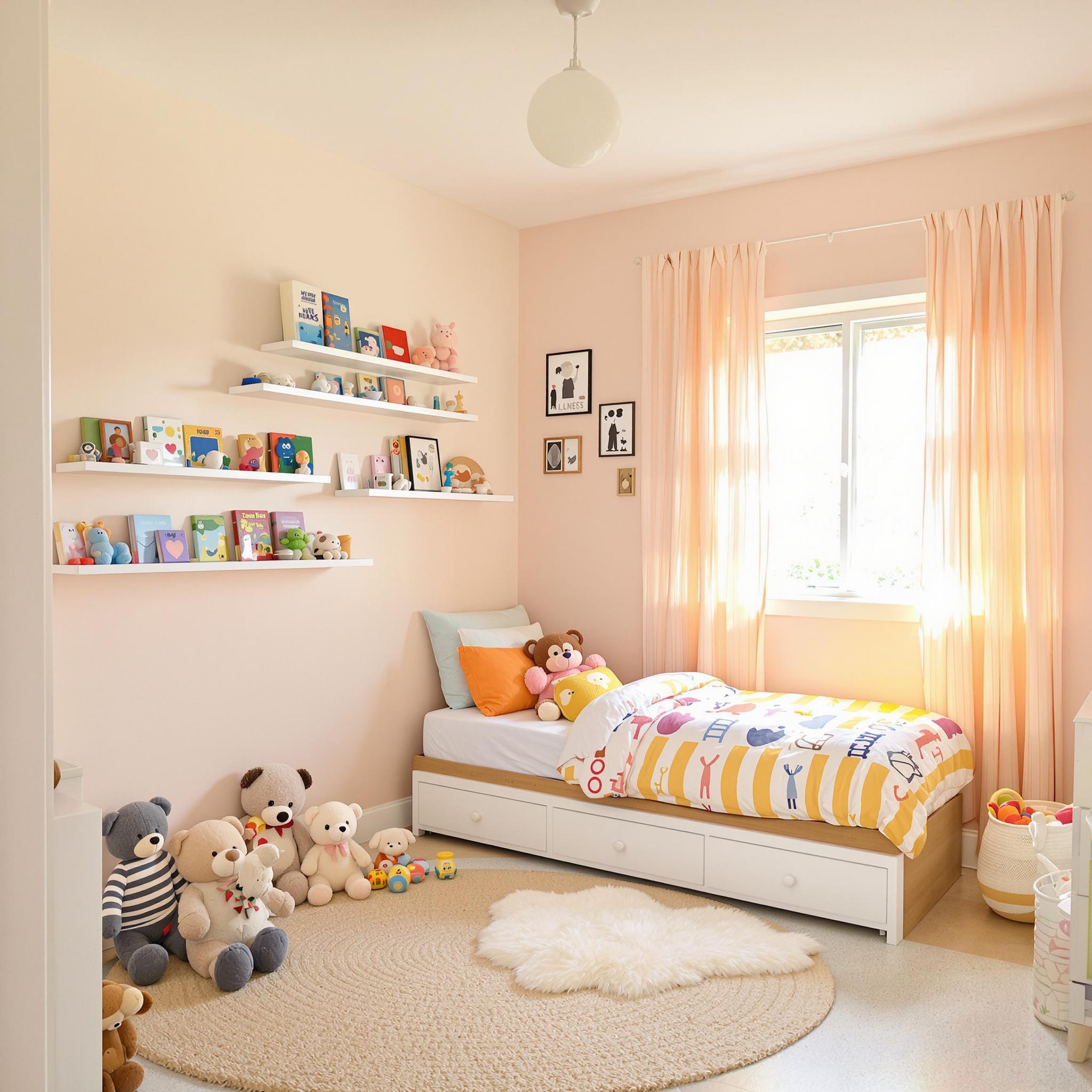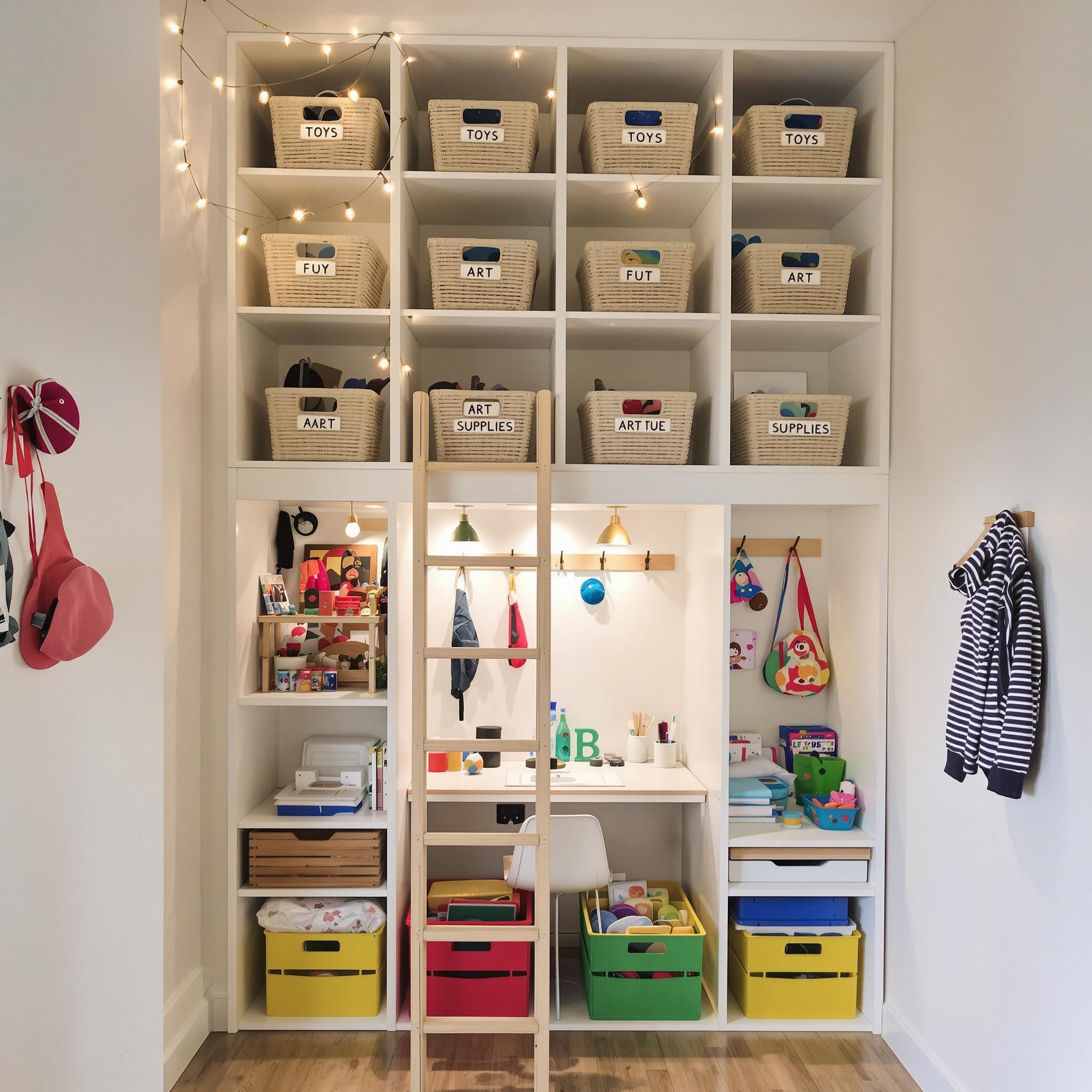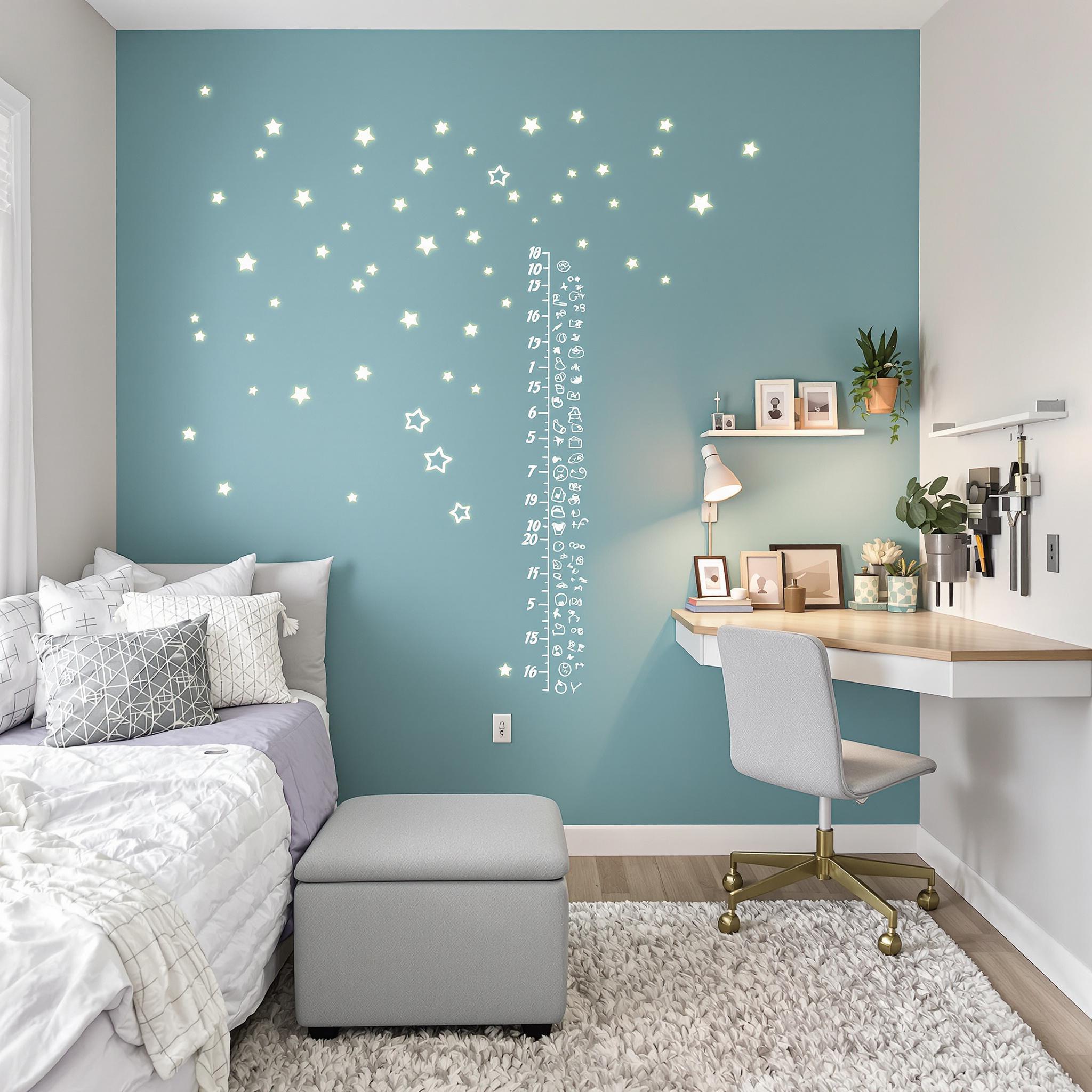Why Small Kids’ Room Layouts Matter
Designing a small kids’ room can feel tricky. Space is tight, but needs are big. Kids need areas to sleep, play, and learn. A good layout makes everyday life easier.
I remember my son’s first room. It was tiny, yet he had so much stuff. We struggled to fit his bed, toys, and books. I learned quickly that smart planning matters.
A well-thought-out layout saves space and reduces stress. Parents can find what they need. Kids can focus on fun and learning.
Start with the Basics: What Fits Where?
Measure the room before buying furniture. Write down the dimensions. This step prevents costly mistakes.
Prioritize key pieces. A bed, storage, and play area are must-haves. Think about how your child uses the space daily.
- Place the bed against a wall to free up floor space.
- Use corners for shelves or desks.
- Keep toys in bins under the bed or in a closet.
Every inch counts in a small room. Be creative with placement.
Think About Zones: Sleep, Play, and Study
Divide the room into zones based on activities. This keeps things organized and functional.
The sleeping zone should feel calm. Choose soft colors and cozy bedding. Avoid clutter near the bed.
The play zone works best near natural light. Add a rug to define the space. Keep toys within easy reach.
If your child is school-age, add a study zone. Use a small desk and chair. Mount shelves above for supplies.
Zones help kids know where to do each activity. This setup teaches them organization early.
Choose Furniture That Grows With Your Child
Kids grow fast. Their furniture should keep up. Look for pieces that adapt over time.
A loft bed saves space now and later. Add a desk underneath as they get older.
Cubbies and bins work for toddlers and teens. They hold toys, books, or school gear.
Invest in quality basics. A sturdy dresser lasts years. Skip trendy items that won’t age well.
Storage Solutions for Small Spaces
Clutter makes a small room feel smaller. Smart storage fixes this problem.
Use vertical space. Hang shelves high on walls. Store rarely used items up there.
Under-bed storage hides toys or clothes. Slide-out bins make access easy.
Over-the-door organizers hold small things. Think shoes, hats, or art supplies.
Label everything. Kids learn where things go. Labels also make cleanup faster.
Light and Color: Making the Room Feel Bigger
Light changes how we see space. A bright room feels open and airy.
Maximize natural light. Keep windows clear. Add sheer curtains if privacy is needed.
Use mirrors to reflect light. Place one across from a window. The room will feel larger instantly.
Color impacts mood and size. Light shades like white or pastels expand the space. Bold colors work as accents.
Paint one wall a fun color. This adds personality without overwhelming the room.
Safety First: Plan for Peace of Mind
Small rooms mean furniture sits close together. Safety becomes a top concern.
Anchor heavy furniture to walls. This prevents tipping accidents.
Choose rounded edges for desks and tables. Sharp corners can hurt active kids.
Keep cords out of reach. Use cord covers or ties to bundle them neatly.
Test storage bins for choking hazards. Ensure lids are secure but easy to open.
Flexibility: Adapting to Changing Needs
Kids’ interests change often. Their room should adapt with them.
Use removable decor. Wall decals peel off easily. Swap them out as tastes evolve.
Adjust furniture layouts. Move the desk or bed as needed. Rearranging refreshes the space.
Involve your child in updates. Let them pick new colors or accessories. This builds their sense of ownership.
A flexible room grows with your child. It stays useful for years.
Common Mistakes to Avoid
Some designs look great but don’t work in small spaces. Avoid these common errors.
Don’t overcrowd the room. Too much furniture makes it hard to move around.
Skip bulky items. Large dressers or beds eat up valuable space.
Avoid dark colors on all walls. They make the room feel cramped.
Don’t forget about airflow. Leave space around vents and windows.
Plan carefully to sidestep these pitfalls. A thoughtful approach saves time and money.
Practical Design Ideas for Small Kids’ Rooms
Designing a small kids’ room can feel like squeezing an elephant into a Mini Cooper. Tough, right? But here’s the deal: focus on practicality and creativity, and even tiny spaces can become magical havens. Let me share some ideas that’ll make life easier and your kid happier.
First, let’s talk vertical space. If you’re ignoring your walls, you’re missing out. Shelves, pegboards, or loft beds are game-changers. I once visited a friend with a toddler room featuring a loft bed and a reading nook underneath. Fairy lights made it feel straight out of a storybook. Safety matters, though—ensure structures are sturdy and age-appropriate. Wall-mounted desks are great too. They save floor space for homework or drawing.
- Install floating shelves for books and toys.
- Use hooks or pegs for bags, hats, and dress-up costumes.
- Consider bunk beds or loft beds to free up floor area.
Storage doesn’t have to be boring. Baskets, bins, and colorful boxes add personality. I helped my sister paint wooden crates for her son’s nursery. They looked awesome and became his favorite spots for stuffed animals. Label everything clearly to make cleanup less painful. Let’s be real—getting kids to tidy up is no easy task.
Now, multi-functional furniture is where it gets fun. Ottomans with hidden compartments or foldable chairs that turn into tables are lifesavers. A family I know uses a storage bench at the foot of their child’s bed. During the day, it’s seating; at night, it stores blankets. Murphy desks are another win. Pull them down for arts and crafts, then hide them when done. It’s like having furniture with superpowers.
Layout Strategies That Maximize Space
When planning a layout, flexibility is crucial. Kids grow fast, so avoid rigid setups. Arrange furniture in zones for sleeping, playing, and learning. Keep things adaptable. Roll up a playmat, and suddenly you’ve got space for dance parties. Trust me, future you will thank you.
Funny story: My mom rearranged our tiny shared bedroom monthly. One time, she angled my sister’s bed to create an L-shape. At first, it looked weird, but we gained room for a fort-building station. Thinking outside the box often beats sticking to tradition.
Corners are often wasted space. Use them wisely. Corner shelves, bean bag chairs, or mini tents transform awkward spots into cozy retreats. Picture curling up with a book in a bean bag—it’s like having your own secret hideaway.
- Create activity zones to keep clutter contained.
- Utilize corners with clever furniture choices.
- Opt for lightweight, movable pieces for easy reconfigurations.
Lighting matters too. Natural light is best, but if windows are scarce, layer different sources. Task lamps for homework and string lights for ambiance work wonders. I saw someone hang a pendant lamp over a child’s art table. It created a warm vibe that made the room feel bigger.
Color psychology is worth considering. Bright colors stimulate young minds, but too much overwhelms small spaces. Stick to neutral tones for walls and floors, then add pops of color through accessories like pillows, rugs, or curtains. It’s an easy way to refresh the room seasonally.
Mirrors are another trick. They reflect light and create depth, making cramped spaces feel airier. Hang one opposite a window or lean a full-length mirror against a wall. For safety, choose shatterproof options if toddlers are around.
DIY Touches That Add Charm
Now for the fun part—DIY projects. Handmade touches personalize a space. Whether it’s painting a mural, crafting name signs, or sewing pillow covers, these details make the room unique. Plus, involving your kid teaches responsibility and pride.
One summer, my niece wanted a galaxy-themed bedroom. We used glow-in-the-dark paint and stencils to dot stars on her ceiling. It wasn’t perfect, but seeing her face light up every night made it worth it. Imperfections add character.
Chalkboard walls or panels are another great idea. They encourage creativity and are forgiving. Scribbles, doodles, math problems—all have a place. Add chalkboard paint, and you’ve got an instant canvas. Frame it with molding for a polished look.
Sometimes simplicity works best. A well-placed rug defines a space better than any fancy divider. Swap heavy drapes for sheer ones to brighten and enlarge a room instantly.
To wrap up, designing a small kids’ room isn’t about cramming stuff in. Focus on function, foster imagination, and leave room to grow. Whether you go all-out or stick to basics, aim for a joyful, livable space. After all, home should be where dreams take flight—even if those dreams involve midnight blanket forts.
Maximizing Comfort, Safety, and Longevity: The Finishing Touches
Let’s be real—designing a small kid’s room isn’t just about squeezing stuff into a tiny space. It’s about making a cozy spot where they can dream, play, and feel secure. Funny thing is, the best tips don’t involve spending a fortune or hiring help. They’re all about planning ahead and using what you’ve got.
Think about that scene in *Toy Story* where Andy’s room feels like its own world. That’s the goal here. But instead of Buzz saving the day, it’s your smart choices that make it happen. Here’s how to get there.
Think Multi-Functional Furniture (Because Space is Precious)
If there’s one thing I’ve learned from redoing my nephew’s tiny room five times in two years, it’s this: multi-functional furniture is key. Take bunk beds with drawers underneath. They save floor space and give you a sneaky spot for toys, books, or off-season clothes. Smart, right?
- Storage ottomans: Great for sitting, storing toys, or even as a step stool.
- Foldable desks: Perfect for homework spots that disappear when not in use.
- Wall-mounted shelves: Keep clutter off the floor while showing off their favorite things.
One quick tip: Always measure twice before buying anything. Once, I brought home a cute bookshelf only to find it blocked half the window. Live and learn!
Lighting Matters More Than You Think
Here’s the deal: lighting makes or breaks a room. Bright overhead lights are fine for cleanup time, but softer, layered lighting creates a cozy vibe for bedtime stories or quiet play.
Try mixing a main light with a few lamps. A nightlight shaped like their favorite animal? Cute and useful. Dimmer switches are another great option if you’re handy or willing to hire someone. And fairy lights? Kids love them. My niece has twinkly string lights above her bed, and she swears they make her room magical. Honestly, I kinda agree.
Pro tip: Keep cords tucked away safely. Kids plus exposed wires equals trouble waiting to happen.
Create Zones Without Walls
In a small room, zoning is your secret weapon. No drywall required. Use rugs, furniture placement, or even colorful tape on the floor to mark areas for sleeping, playing, and studying.
For example, I turned a corner of my son’s room into a reading nook with a bean bag chair, a small bookshelf, and a soft rug. Now he actually wants to read instead of begging for screen time. Go figure.
Funny story: When I set it up, he called it his “office” because he saw me working from home so much during the pandemic. Kids say the funniest stuff, don’t they?
Involve Your Kids in the Process
This might sound odd, especially if you’re into Pinterest boards and color schemes. But involving your kids gives them ownership of their space. Plus, it’s kinda fun to see their ideas.
Maybe they want glow-in-the-dark stars on the ceiling or a mural of dinosaurs. Sure, it might clash with your minimalist style, but it’ll mean the world to them. Seeing their faces light up makes it worth every mismatched pillow and hand-drawn poster.
Just set boundaries early. For example, “You can pick three colors for your walls, but neon green is out.” Compromise is key.
Future-Proof the Layout
Kids grow fast—like blink-and-they’re-teenagers fast. So while baby-themed decor or superhero wallpaper might seem fun now, think long-term. Neutral base colors, adjustable shelves, and timeless furniture will save you money and headaches later.
That said, you don’t have to ditch personality. Add color through accessories like curtains, pillows, or artwork. When they outgrow Paw Patrol, you can swap things out without starting over.
The Power of Personalization
Finally, don’t forget personal touches. Framed family photos, handmade crafts, or a growth chart on the doorframe make a room uniquely theirs.
I still remember the growth chart my parents kept in our hallway. Every birthday, we’d mark our height with a date and a doodle. Those little lines became cherished memories. Why not start your own tradition?
—
Wrapping It All Up
At the end of the day, the goal is simple: create a space where your child feels comfy, safe, and inspired. Whether you’re working with a tiny nursery or a slightly bigger toddler’s room, smart planning and creativity can turn even the smallest space into a magical retreat. It’s not about perfection—it’s about making it work for your family.
So go ahead, experiment, and have fun with it. After all, your kid’s room should reflect who they are now while leaving room for who they’ll become.
FAQs About Designing Small Kids’ Rooms
- How do I maximize storage in a small kid’s room?
Use vertical space with shelves and hooks. Add under-bed bins and multifunctional furniture like ottomans with hidden storage. - What colors are best for a calming environment?
Soft blues, greens, and neutral tones work well. Avoid overly bright colors—they can be too stimulating. - How can I make the room safer?
Anchor heavy furniture to the wall, cover outlets, and tuck cords away. Choose rounded-edge furniture to prevent injuries. - Is it okay to mix themes?
Absolutely! Mixing themes adds character. Just stick to a cohesive color scheme to tie it together. - Should I invest in expensive furniture?
Not really. Focus on durable, versatile pieces that grow with your child. Thrift stores and hand-me-downs can be gold mines. - How do I incorporate learning into the design?
Add a chalkboard wall or magnetic board for creative play. Include a reading corner with age-appropriate books. - What if my child wants bold colors?
Balance bold accents with neutral bases. For example, pair a bright accent wall with muted bedding and decor. - How often should I update the room?
Update as needed based on your child’s interests and growth stages. Focus on swapping decor, not redoing the entire layout. - Can I use wallpaper in a small room?
Yes! Wallpaper can add depth and interest. Stick to patterns that aren’t overwhelming in tight spaces. - How do I deal with limited natural light?
Use mirrors to reflect light and choose light-colored paint. Add warm, layered lighting to brighten the space.



